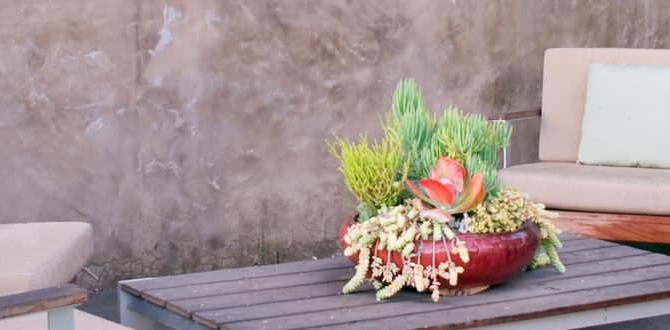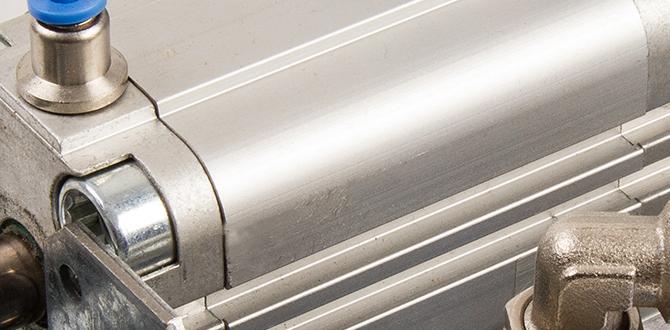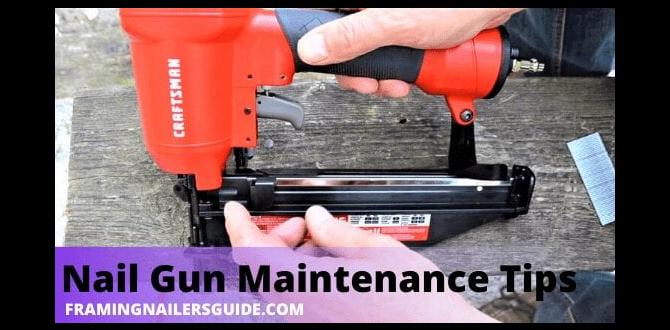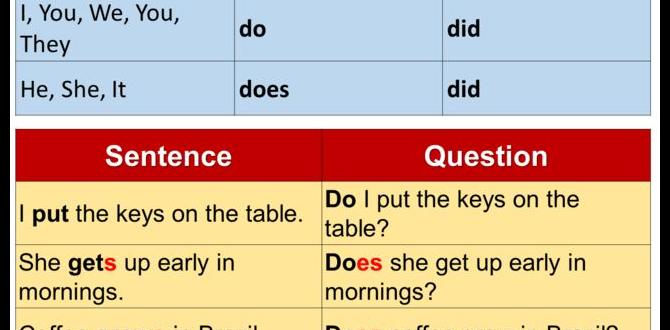Have you ever thought about the beauty of reclaimed wood flooring? Imagine the stories behind each piece of wood. This flooring is not just stylish; it’s also good for the environment. But there’s a crucial step you should not skip: subfloor prep.
Proper subfloor prep ensures that your reclaimed wood flooring lasts a long time. Did you know that a well-prepared subfloor can prevent many issues down the road? It keeps your floors level and safe. Think about that nice, warm feeling underfoot when you walk on perfectly laid reclaimed wood.
In this article, we will explore the importance of subfloor prep for reclaimed wood flooring. We will share tips and steps to make this job easier. Get ready to learn how to create a solid foundation. Your beautiful new floors deserve it!
Table of Contents
Reclaimed Wood Flooring Subfloor Prep: Essential Guide
Ready to transform your space with reclaimed wood flooring? Proper subfloor prep is key! First, check for moisture. A dry base prevents damage. Next, ensure a level surface. Uneven floors can lead to issues later. Did you know that skipping these steps can ruin your beautiful flooring? Imagine walking on a wobbly floor; not fun! By taking the time to prepare your subfloor, you ensure longevity and beauty for your reclaimed wood. Happy renovating!
Understanding Reclaimed Wood Flooring
Definition and benefits of reclaimed wood flooring. Common sources and types of reclaimed wood.
Reclaimed wood flooring tells a unique story. It’s made from old wood, like barn beams or factory floors, repurposed for new homes. This wood looks great and is eco-friendly. Using it helps save trees and reduces waste. Talk about a win-win! You can find reclaimed wood from many sources, such as old buildings, wine barrels, or even trees that fell in storms. Each plank is different and full of character.
| Common Sources | Types of Reclaimed Wood |
|---|---|
| Old barns | Hardwoods |
| Factories | Softwoods |
| Wine barrels | Rustic styles |
So, if you want to add a little charm to your home, reclaimed wood is the way to go! Plus, it makes for great conversation. Who knew flooring could be so exciting?
Importance of Proper Subfloor Preparation
Reasons for prepping the subfloor before installation. Impact on the longevity and performance of reclaimed wood flooring.
Preparing the subfloor is key for a successful installation of reclaimed wood flooring. It ensures a smooth and stable base. If not done right, problems may arise later. Here are some important reasons:
- Longevity: Proper prep can extend the life of your flooring.
- Performance: A good subfloor helps the wood perform better and resist damage.
- Moisture Control: It can prevent moisture issues that harm the wood.
By taking these steps, you set up your floor for lasting beauty and function.
Why is subfloor preparation important?
Subfloor preparation is important because it supports the flooring and helps it last longer. A solid subfloor reduces gaps and uneven surfaces. This makes your reclaimed wood look great for years.
Assessing Your Subfloor Condition
Signs of damage or wear in existing subfloors. Evaluating moisture levels and stability.
Checking your subfloor is like a health check for your home! First, look for cracks, bumps, or wear. If it looks like an old pancake, it’s time for a makeover. Next, don’t forget to check for moisture. Too much dampness can make your wood flooring feel like it’s dancing in a rainstorm! Use a moisture meter for accurate readings. Here’s a quick table to help you spot signs of trouble:
| Sign | What it Means |
|---|---|
| Cracks | Possible subfloor damage |
| Warping | Moisture issues |
| Squeaky Sounds | Loose boards or instability |
Keep an eye out for these issues, and your new reclaimed wood flooring will have a sturdy base to shine on!
Choosing the Right Subfloor Material
Different types of subfloor materials (plywood, OSB, concrete). Advantages and disadvantages of each option for reclaimed wood flooring.
Different materials can be used for subfloors. Each has its own good and bad sides. Here are three options:
- Plywood: It’s strong and lightweight. It can hold weight well but may warp in wet areas.
- OSB (Oriented Strand Board): This option is cheaper than plywood. It’s good for dry spaces, but can swell if it gets wet.
- Concrete: This is very strong and works for any area. However, it can be cold and hard on the feet.
Your choice depends on your home’s needs. Think about moisture levels and weight when picking a material for reclaimed wood flooring.
What is the best subfloor material for reclaimed wood?
The best subfloor material for reclaimed wood is usually plywood, due to its support and stability. However, concrete is also a good choice for high-moisture areas.
Preparing the Subfloor: Step-by-Step Process
Cleaning and clearing the subfloor area. Repairing damages and leveling the surface. Moisture barrier installation considerations.
Start by transforming your space! First, clean and clear the subfloor area. Kick out dust bunnies and any old debris. Next, spot any damages and give them a good fix. Use wood filler for small holes and replace any broken boards. Then, it’s time to level the surface. A flat floor is your best friend! Lastly, don’t forget the moisture barrier. This is like an umbrella for your flooring, keeping water away. Remember, a happy floor makes for a happy home!
| Step | Action |
|---|---|
| 1 | Clear the area |
| 2 | Repair damages |
| 3 | Level the surface |
| 4 | Install moisture barrier |
Tools and Materials Needed for Subfloor Prep
Essential tools for subfloor preparation. Recommended materials for best results.
Getting ready for reclaimed wood flooring means using the right tools and materials. These help make the job easier and faster. Here’s what you will need:
- Tools:
- Measuring tape
- Level
- Saw
- Drill
- Hammer
- Chisel
- Materials:
- Subfloor panels
- Adhesive
- Underlayment
- Fasteners
Using these tools and materials will help you prepare a strong base for your flooring. A well-prepared subfloor keeps everything in place. This makes your new floor last longer.
What tools are essential for subfloor preparation?
For subfloor prep, you need a few basic tools. These tools include a measuring tape, saw, and drill. They help ensure everything fits perfectly and is sturdy.
Recommended materials for the best results:
Choose the right materials for a strong base. Using good subfloor panels and adhesive helps create a solid foundation. This is key to a long-lasting floor.
Common Mistakes to Avoid in Subfloor Preparation
Overlooking moisture issues. Improper leveling techniques. Skipping the cleaning process.
Avoiding some common mistakes can make your subfloor prep a breeze! First, don’t ignore moisture issues. It’s like skipping the umbrella on a rainy day—wet floors lead to trouble! Second, improper leveling is a surefire way to end up with a floor that looks like a funhouse mirror. Make sure to level everything properly. Lastly, skipping the cleaning process is a big no-no. Dust bunnies don’t make great roommates for your new flooring. Here’s a quick summary:
| Mistake | Why to Avoid |
|---|---|
| Ignoring moisture | Leads to warping and mold |
| Improper leveling | Creates an uneven surface |
| Skipping cleaning | Dust can damage and stick |
Final Checks Before Installation
Lastminute inspections to ensure readiness. Tips for testing the subfloor’s suitability for reclaimed wood flooring.
Before starting the installation, make sure everything is ready. Check your subfloor closely. Look for any signs of damage or unevenness. Here are some quick tips for testing it:
- Check for moisture: Use a moisture meter to ensure the subfloor is dry.
- Test the level: Place a straight board across the subfloor to spot any highs or lows.
- Listen for squeaks: Walk on the subfloor. If you hear squeaking, it might need fixing.
A little effort now can save you big problems later!
How do I know if my subfloor is suitable for reclaimed wood flooring?
Check for moisture, level, and make sure it’s clean. These tests help ensure damaged areas don’t cause problems.
Expert Tips for Successful Installation
Best practices for laying reclaimed wood flooring over prepared subfloor. Maintenance advice to keep the flooring in top condition.
To lay reclaimed wood flooring well, follow these expert tips for success. First, make sure your subfloor is smooth and dry. Use a level to check for high or low spots. Use moisture barriers if needed. Finally, let the wood acclimate for a few days. It helps prevent gaps later.
To maintain your beautiful floor, follow these steps:
- Clean with a damp mop, not water.
- Use gentle cleansers made for wood.
- Avoid dragging furniture; lift it instead.
Taking care of your reclaimed wood flooring is simple. Regular attention keeps it looking great!
How to take care of reclaimed wood flooring?
Regular cleaning and proper care are key. Rotate rugs and clean spills quickly to avoid stains.
Conclusion
In conclusion, preparing your subfloor is crucial for reclaimed wood flooring. Clean the area, check for moisture, and fix any damage. This ensures a stable, long-lasting foundation. Remember, good prep leads to beautiful floors. If you want to learn more, consider reading guides on subfloor materials and installation tips for best results in your home.
FAQs
What Steps Should Be Taken To Assess The Condition Of A Subfloor Before Installing Reclaimed Wood Flooring?
First, you should check the subfloor for water damage. Look for dark spots or soft areas that feel weak. Next, make sure it’s level and flat by using a straight edge or level tool. We should also check for squeaks or any loose boards by walking on it. Lastly, ensure it is clean and free of dirt before installing the reclaimed wood flooring.
How Do Moisture Levels In The Subfloor Affect The Installation Process Of Reclaimed Wood Flooring?
Moisture levels in the subfloor are very important when you install reclaimed wood flooring. If the subfloor is too wet, the wood can swell and warp. This can ruin your beautiful floors. We need to check the moisture first, so the wood looks great and lasts a long time. Keeping the subfloor dry helps everything stay in shape!
What Preparations Are Necessary To Level A Subfloor Prior To Laying Reclaimed Wood Flooring?
To get a subfloor ready for reclaimed wood flooring, we need to check it for bumps and holes. First, we sweep and clean it well. Then, we fill any cracks with a special filler. If the floor is too uneven, we can use a leveling compound to smooth it out. Finally, we let everything dry before placing the wood floor down.
Are There Specific Underlayment Materials Recommended For Reclaimed Wood Flooring Installations?
Yes, there are good underlayment materials for reclaimed wood floors. You can use foam or felt underlayment. These help with sound and make the floor feel softer. They also protect the wood from moisture. Always check the manufacturer’s guidelines to choose the best one!
What Are The Best Practices For Cleaning And Repairing A Subfloor To Ensure A Successful Installation Of Reclaimed Wood Flooring?
To clean your subfloor, start by removing any dirt, dust, or old flooring. Use a broom or vacuum to get it nice and clean. If you find any holes or cracks, fill them with wood filler and let it dry. Make sure the subfloor is level and sturdy. This way, your reclaimed wood flooring will look great when you install it!






